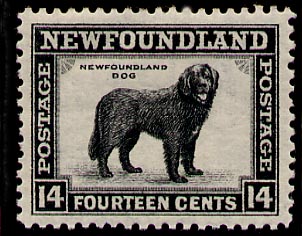
History

 |
Newfoundland History |
 |
Newfoundland History
The Great Depression, Economic Collapse in Newfoundland and
Newfoundland's Loss of Responsible Government
[The text was published in 1950. For the full citation, see the end of the document. Parts in brackets [...] and links have been added to the original document by Claude Bélanger.]
Economic Collapse
During the decade 1920-30 the Newfoundland Government had greatly extended its obligations. The Newfoundland Railway, after years of unsuccessful financing, was finally unable to carry on and in 1923 was taken over by the Government with all its subsidiary enterprises including coastal steamships. During the next ten years the Government poured an average of $1,000,000 a year into the Railway. The Newfoundland Royal Commission of 1933 estimated that the net cost of the Railway to the country since its inception was $42,500,000, of which $39,500,000 was included in the national debt. The Government had also embarked on a program of road building for which another $10,700,000 had been borrowed. Thus in 1933 close to half the total debt was directly chargeable to railways and highways.
It was a period of easy borrowing. Between 1920 and 1932 the public debt doubled and the average budget deficit on current account was $2,000,000; by 1932, 56 p.c. of the average revenue over these years was needed to meet interest charges. Fully 95 p.c. of the debt was held externally.
Thus when the depression struck in 1929-30, Newfoundland was in an extremely vulnerable position. In three years the value of exports dropped from about $39,200,000 to about $22,800,000; in two years the export prices of dried cod had been cut in half. By the winter of 1932-33 a quarter of the population was on government relief. Public revenues dropped from about $11,600,000 in 1929-30 to less than $8,000,000 in 1931-32. Despite heroic retrenchment the Government could not carry on financially, and its credit was at an end. In 1933, the new Government requested the United Kingdom Government to appoint a Royal Commission to investigate the financial situation and make recommendations. [See this site on the conditions leading to the collapse of Responsible Government in Newfoundland ]
Loss of Responsible Government
[Mel Baker has analyzed the events leading to the loss of Responsible Government at this address.] Although recognizing the Island 's inherent economic difficulties, the main remedies proposed by the Commission were constitutional and financial. The constitutional recommendations were that Newfoundland should be "given a rest from party politics", that the existing form of government should be suspended until such time as the Island should again be self-supporting, and a special Commission of Government, composed of six members, three from Newfoundland and three from the United Kingdom, under the chairmanship of the Governor, should be established to govern the Island under the supervision of the Dominions Office. With regard to finance, it was recommended that the United Kingdom Government should assume general responsibility for the Island's finances until such time as Newfoundland should be self-supporting again, it being understood that responsible government would then, on request of the people of Newfoundland, be restored. These recommendations were approved by the newly elected Newfoundland Legislature and implemented by the United Kingdom Parliament in the Newfoundland Act, 1933.
The Commission of Government took office on Feb. 16, 1934, and governed the Island until union with Canada became effective on Mar. 31, 1949. The Commission was faced with abnormal difficulties due to world trade conditions which severely limited the market for salt cod. The Commission's first task was to give assistance to the fishing industry by first building and later subsidizing the construction of fishing vessels and by creating the Fisheries Board, under which marked progress was made in improving standards of production and methods of marketing. By 1939, though prices were still low, the industry was much better organized to meet new conditions of international trade.
An effort was also made to improve farming through education, cash bonuses and a scheme of land settlement. Little could be done for the forest industries since most of the forest land was already controlled by the paper industry, and its output depended on foreign markets. Geological survey was extended and new ore bodies investigated. The main line of the railway was restored to pre-depression standards, several new coastal steamers were added to the service, and local roads were provided for communities in urgent need of transportation to rail or steamer ports. A further accomplishment was the improvement in public services. Expenditures on health and education were doubled. The Civil Service was reorganized and methods of administration were greatly improved. [On the history of the Commission of Government, see the article by Mel Baker.]
Source: GOVERNMENT OF CANADA , Newfoundland. An Introduction to Canada's New Province, Published by authority of the Right Honourable C. D. HOWE, Minister of Trade and Commerce, prepared by the Department of External Affairs, in collaboration with the Dominion Bureau of Statistics, Ottawa, 1950, 142p., pp. 15-41.
© 2004 Claude Bélanger, Marianopolis College |